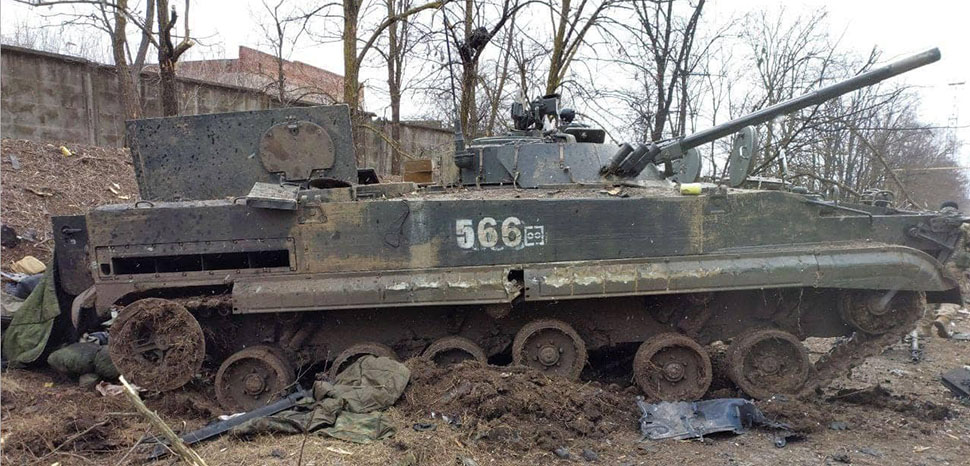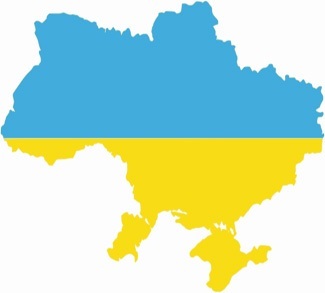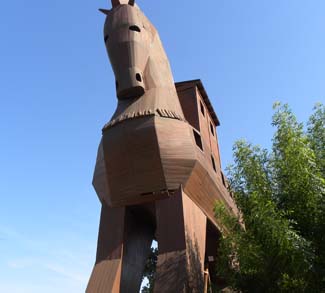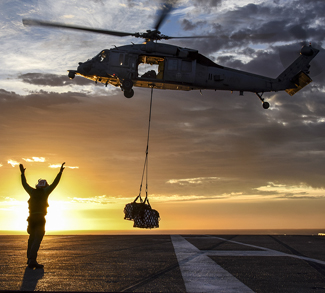The city of Mariupol has been on the forefront of the Russian invasion of Ukraine as a strategically important prize for both Kyiv and Moscow. The fight for the city, which saw intense house-to-house fighting, resembled the Battle of Fallujah of 2004, and it left Mariupol effectively destroyed thanks to indiscriminate Russian shelling and air strikes.
After Russian forces finally closed in the on the city, following months of valiant efforts by defenders at the Azovstal steel works, the central government in Kyiv ordered them to surrender, stating their job was done as they effectively stalled for time so that other embattled Ukrainian Forces could consolidate their defensive positions. Russia state media portrayed Mariupol as one of the biggest strategic victories of the war thus far, declaring the operation a successful “liberation.” Subsequent to this, the Kremlin has employed Mariupol as an example of Russia’s “denazification” policies toward Ukraine, emphasizing the brighter side of life there while not allowing any glimpse of the true horror of the aftermath of the battle.
The propaganda of occupation
The Russian military has presented Mariupol as the crown jewel of the war thus far. The occupying authorities have set up a puppet government and regularly display media showing Russian soldiers handing out food and supplies to locals; yet they have refused to expand on the issue. Pro-Russian media figures have recently pointed to the reconstruction of the Mariupol drama theater as a success story in rebuilding the city. The theater was the site of one of the most horrific bombing attacks of the war, where the Russian Air Force leveled the compound with six hundred civilians inside.
As Mariupol is in the Donetsk oblast, over half of which is controlled by a Russian proxy state (the DPR), Ukrainian children in Mariupol will now be subjected to the Kremlin-controlled educational curriculum. This will include an extremely pro-Russian teaching doctrine that effectively erases the history of the Ukrainian state. Whereas the allied states of WWII created an educational system to show Germany the problems of Nazism while growing their society, Moscow will look to fully indoctrinate Ukrainian children to deny their statehood and nationalism, which has emerged as one of the Kremlin’s central goals.
Growing socioeconomic issues
During the height of the Battle of Mariupol, the city faced an electricity and gas shortage due to Russian bombardment, and this issue has yet to be resolved. In June, it was reported that residents of the city were collecting water from ponds and pipe leakages, showing how much the city infrastructure has been degraded. Such accounts are also backed by photographs of residents struggling in the city.
Electricity has also been in short supply in the battered city, with only a few isolated neighborhoods having power. Internet services are strictly monitored by Russian providers, giving occupational forces full oversight of civilians. This gives them justification arrest, torture, or even execute civilians as they can track their signals and social media throughout the city.
Along with an energy crisis, there has also been a severe food shortage in the city. Contrary to claims that Mariupol is “thriving,” residents appear malnourished with little food supplies coming in from the DPR proxy or from Moscow. The International Committee of the Red Cross recently stepped in to help with the humanitarian situation, but has seen little progress. There was even a hunger riot reported in the city, triggered by a lack of distribution of rations by the Red Cross. It should also be noted that the Red Cross was a major factor in the deal that was meant to safeguard the surrendering Azovstal fighters – a deal that Russia has quickly reneged on.
Filtration camps
One of the most horrific policies the Kremlin has imposed on Mariupol is the use of “filtration” camps, which are nothing short of detention/concentration camps with minimal regard for human rights. The camps are essentially ghettos where reports of torture and abuse are widespread; and little to no medical care exists as doctors have not been permitted to enter the camps according to Vadym Boychenko, the mayor of the city. Men are separated and held indefinitely to be used as forced conscripts, as Russian manpower continues to be depleted, and children are forcibly separated from their families.
The method of using these camps is not something new in Russian history; but it surely resonates with those Ukrainians who lived under Moscow’s boot in the Soviet era. Mass detention centers were used extensively in the USSR, particularly by Josef Stalin, a man responsible for millions of Ukrainian deaths. These camps have come under increasing scrutiny by major organizations and human rights organizations. Moscow still has not allowed international observers to visit them—most likely to hide the war crimes occurring within.
Mass deportations and forced relocations
Echoing the ethnic cleansing seen during the Yugoslav Wars, the Kremlin has enacted a policy of forced deportation of Ukrainians from Mariupol and the wider Donbas region. The Russian government itself has not tried to hide its ill-intentions, stating that some 1,426,979 Ukrainians have been deported to Russian Federation governed territory, supposedly to ‘save’ them.
It was reported that more than 1,000 children illegally taken from Mariupol were “adopted” by Russians—hinting that, not only were their parents killed during the Russian invasion, but the intention is to brainwash the children, as Putin has made no secret of his goal to wipe the Ukrainian state and identity out of existence. The Forcible transferring of a population has been outlawed by the Genocide Convention of 1948, backed by the United Nations and Geneva Conventions.
Concealing the civilian death count
One of the biggest questions of the war pertains to official attempt to determine the death count of civilians caught in the wreckage of the city. In May, the number of civilians estimated to have been killed during the Russian offensive was estimated to be at least ten thousand, but this number has been called a gross underestimate. Mayor Boichenko has estimated the number to be at least twenty thousand civilians. A recent report by Mariupol TV President Mykola Osychenko states the death toll could be as high as 87,000 – a number that has not been independently verified due to the Russian occupation. Though this most recent number could be an overestimate, it does hint at the extent of the damage and suffering in the wake of the battle.
Russian occupational authorities and their collaborators have enacted policies attempting to hide the remains of civilians killed, which could be instrumental in investigations into war crimes.
Alleged or possible war crimes attributed to the Russian occupying forces include: 1) In March, at the height of the Battle of Mariupol, Maxar, a well-known satellite firm published images of potential mass graves being built by Russian Forces near the city; 2) in late May, 200 bodies were found under the rubble of a residential building; and 3) In late August, the ZSU reported that RF in the city have started pouring concrete over the drama theater to conceal the victims killed in the original Russian attack on the theater.
Along with nefarious plans to fully “Russify” the city, the mayor’s adviser has remarked on a RF plan to destroy a 5,000-year-old archaeological site in the city. If executed, this will only further confirm plans for a wider campaign of cultural genocide. This would amount to another war crime, as cultural destruction is also outlined in the Geneva Convention; it would not be the first time the RF have targeted cultural sites.
Overall, Mariupol remains a hell on earth, and despite the Russian whitewashing that shows the pros of “liberation,” the cons far outweigh the sunny view of Kremlin propaganda. Whereas Mariupol is merely a ‘strategic objective’ to Russia, the city remains a cultural center and the heart of Ukraine and their resistance to their neighbor’s imperial ambitions.
The views expressed in this article belong to the authors alone and do not necessarily reflect those of Geopoliticalmonitor.com




